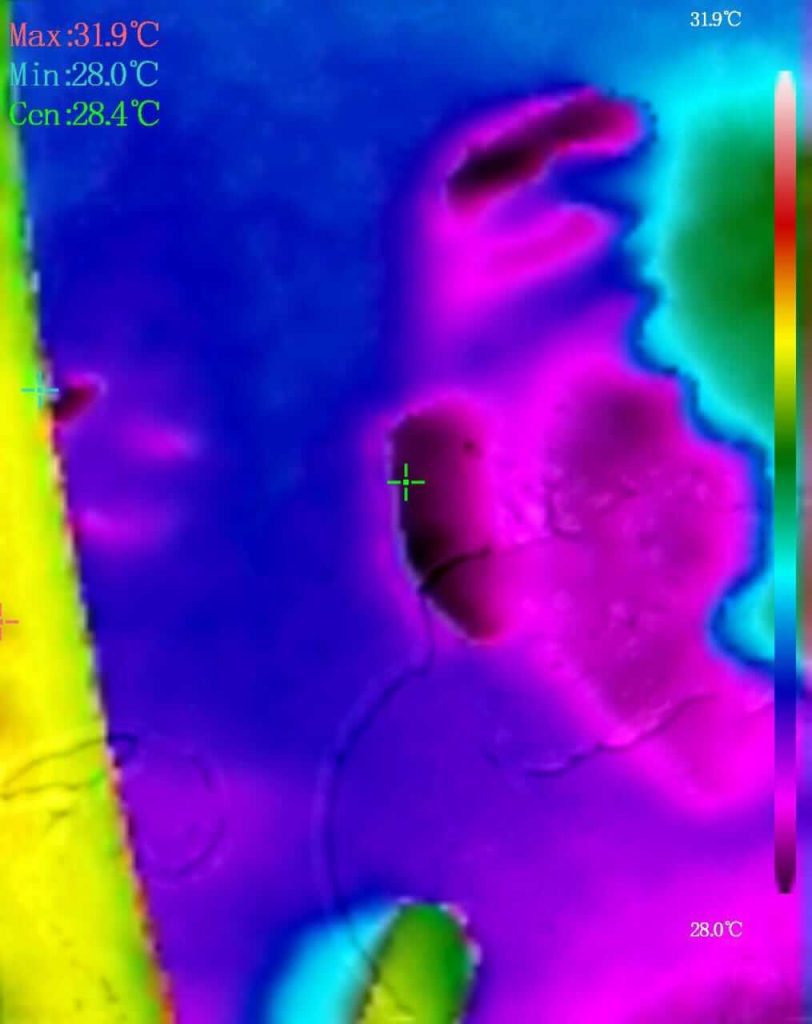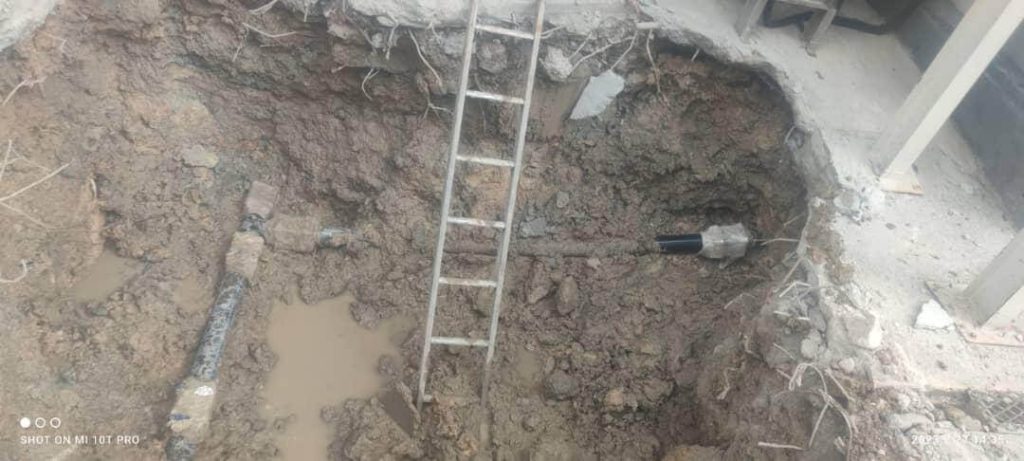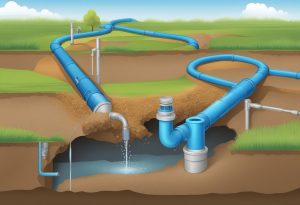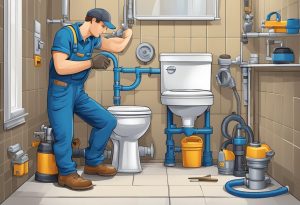Introduction: The Importance of Detecting and Fixing Pipe Leaks in Engineering
pipe leak detection, engineering pipe leaks, importance of fixing leaks, pipe leak prevention

Understanding Pipe Leaks
Common Signs and Symptoms of Pipe Leaks in Engineering
pipe leak indicators, signs of leaking pipes, water damage from pipe leaks, abnormal water bills
If you’re a homeowner or a business owner, chances are you’ve experienced a leaky pipe at some point. Leaks can be a major headache and can cause significant damage if not addressed quickly. Fortunately, there are technologies available that can help you detect and fix leaks quickly, saving you time and money.
At Seven Engineering, we specialize in water detection and offer advanced underground leak detection services. Our team of experts utilizes state-of-the-art equipment and techniques to accurately locate and repair leaks, preventing further damage to your pipes and property. In this article, we’ll walk you through the process of detecting and fixing leaks, as well as provide some preventive measures and maintenance tips to help you avoid leaks in the future.
Understanding pipe leaks and the technologies available to detect them is the first step in fixing the problem. In the next section, we’ll discuss the different technologies used in leak detection and how they work. We’ll also provide a step-by-step guide to help you detect leaks in your pipes quickly and efficiently.
Discover the Seven Engineering Pipe Leaking Detector, your ultimate solution for quickly finding and fixing leaks. Learn expert techniques and tools to detect leaks in pipes efficiently, saving you time and money. Say goodbye to costly water damage – get started today!
If you’re dealing with a leaking pipe, it’s essential to understand the causes and signs of pipe leaks. This knowledge will help you find the source of the leak and fix it quickly. In this section, we’ll discuss the causes and signs of pipe leaks.
Causes of Pipe Leaks
There are several causes of pipe leaks, including:
- Corrosion: Over time, pipes can corrode, leading to leaks.
- Wear and tear: Pipes can also develop leaks due to wear and tear, especially in older pipes.
- High water pressure: High water pressure can cause pipes to burst or develop leaks.
- Temperature changes: Extreme temperature changes can cause pipes to expand and contract, leading to leaks.
- Tree roots: Tree roots can grow into pipes, causing them to crack and leak.
To prevent pipe leaks, it’s essential to maintain your pipes regularly. This includes checking for signs of corrosion, wear and tear, and other damage. You should also have your pipes inspected by a professional plumber regularly.
The Seven Most Effective Methods for Detecting Pipe Leaks in Engineering Systems
engineering pipe leak detection methods, pressure testing for leaks, acoustic leak detection, thermal imaging for leaks, visual inspection techniques
In the world of engineering, one of the most common and frustrating issues is pipe leaks. These leaks can cause significant damage to infrastructure, leading to costly repairs and potential safety hazards. However, with advancements in technology, engineers now have access to innovative tools such as pipe leaking detectors that can help identify and fix leaks quickly.
A pipe leaking detector is a device specifically designed to detect leaks in pipes. It utilizes various methods, including sound detection, thermal imaging, and pressure monitoring, to pinpoint the exact location of the leak. By accurately identifying the source of the problem, engineers can save valuable time and resources by avoiding unnecessary excavation or dismantling.
One of the key advantages of using a pipe leaking detector is its ability to find hidden leaks that may not be immediately visible or accessible. This is particularly useful in large-scale industrial settings or complex plumbing systems where traditional inspection methods may fall short. By detecting even the smallest leaks early on, engineers can prevent further damage and mitigate potential risks.

Technologies in Leak Detection
The Seven Most Effective Methods for Detecting Pipe Leaks in Engineering Systems
engineering pipe leak detection methods, pressure testing for leaks, acoustic leak detection, thermal imaging for leaks, visual inspection techniques
Step-by-Step Leak Detection
If you suspect a pipe leak, it’s important to identify it quickly to prevent further damage. There are several technologies available to detect leaks, each with its own advantages and disadvantages. Here are three common technologies used in leak detection:
Acoustic Detectors
Acoustic detectors use sound waves to detect leaks in pipes. They work by placing sensors on the pipe, which pick up the sound of water escaping from the pipe. The sensors then send this information to a control unit, which analyzes the sound and determines if there is a leak. Acoustic detectors are most effective on metal pipes, but can also work on plastic pipes.
Infrared Imaging
Infrared imaging is a non-invasive method of detecting leaks in pipes. It works by using a thermal camera to detect changes in temperature caused by leaking water. The camera can detect temperature changes as small as 0.1°C, making it a highly accurate method of leak detection. Infrared imaging is most effective on pipes that are insulated or buried underground.
Smart Water Sensors
Smart water sensors are small devices that can be placed near pipes to detect leaks. They work by monitoring the moisture levels in the air, and can detect when there is an increase in moisture caused by a leak. Smart water sensors can be connected to a home automation system, allowing you to receive alerts on your phone if a leak is detected.
Each of these technologies has its own strengths and weaknesses, and the best method for detecting a leak will depend on your specific situation. It’s important to choose the right technology for your needs to ensure that leaks are detected quickly and accurately.
Step-by-Step Leak Detection
If you suspect a leak in your pipes, it’s important to act quickly to prevent further damage. Seven Engineering’s pipe leaking detector can help you find and fix leaks quickly. Here’s a step-by-step guide to using the detector:
Preparing the Area
Before you begin, make sure the area around the pipes is clear and dry. Remove any items that may obstruct your view or interfere with the detector’s readings. If necessary, use a towel or cloth to dry any moisture on the pipes.
Using the Detector
Next, turn on the detector and adjust the settings to suit your needs. Place the detector near the suspected leak and wait for the readings to stabilize. If the detector detects a leak, it will emit an audible alert and display the location of the leak on the screen.
Interpreting the Results
Once you have located the leak, it’s time to fix it. Depending on the severity of the leak, you may be able to fix it yourself with a sealant or other DIY solution. If the leak is more severe, you may need to call in a professional plumber to fix the problem.
In conclusion, using Seven Engineering’s pipe leaking detector can help you quickly and easily find and fix leaks in your pipes. By following these simple steps, you can save time and money and prevent further damage to your home.
The Importance of Quick Action: How to Prioritize and Address Pipe Leaks Efficiently
quick response to pipe leaks, emergency measures for leaking pipes, minimizing water damage from leaks
Leak detection is an important aspect of pipeline maintenance. However, it is better to prevent leaks from happening in the first place. Here are some preventive measures you can take to reduce the risk of leaks in your piping system.

Fixing Detected Leaks
Once you have detected a leak in your pipeline, it is essential to fix it immediately to avoid further damage. Depending on the severity of the leak, you may need to apply a temporary solution before you can make a permanent repair. In this section, we will discuss some of the temporary and permanent solutions to fix detected leaks.
Temporary Solutions
Temporary solutions are quick fixes that can be applied to stop the leak temporarily until a permanent repair can be made. Here are some temporary solutions:
- Epoxy Putty: Epoxy putty is a two-part adhesive that can be mixed together and applied to the leak. It will harden and create a seal around the leak. This solution is best for small leaks.
- Rubber Tape: Rubber tape can be wrapped around the leak to create a temporary seal. This solution is best for small leaks and can be used in conjunction with epoxy putty.
- Clamp: A clamp can be used to tighten the pipe and create a temporary seal. This solution is best for larger leaks.
How to Effectively Fix Pipe Leaks in an Engineering System
Permanent Repairs
Permanent repairs are long-term solutions that will fix the leak permanently. Here are some permanent repairs:
- Replace the Pipe: If the pipe is old or damaged, it may need to be replaced. This solution is best for larger leaks or when the pipe is in poor condition.
- Soldering: Soldering is a process that involves melting a metal alloy to create a bond between two metal surfaces. This solution is best for leaks in copper pipes.
- Pipe Fittings: Pipe fittings can be used to replace damaged sections of the pipe. This solution is best for leaks in PVC or other plastic pipes.
It is essential to choose the right solution based on the severity of the leak and the type of pipe. If you are unsure about which solution to use, it is best to consult a professional plumber.
Once a leak has been identified using a pipe leaking detector, engineers can then proceed with prompt repairs. Depending on the severity and location of the leak, various techniques such as sealing compounds or epoxy injections may be used for temporary fixes. For more extensive repairs or replacements, advanced welding or soldering techniques may be required.
Tips and Best Practices for Preventing Future Pipe Leaks in Engineering Systems
pipe leak prevention strategies, regular maintenance checks on pipes and fittings.
Leak detection is an important aspect of pipeline maintenance. However, it is better to prevent leaks from happening in the first place. Here are some preventive measures you can take to reduce the risk of leaks in your piping system.
Regular Inspections
Regular inspections are essential to detect leaks early and prevent major damage. You should conduct visual inspections on a regular basis to check for signs of corrosion, cracks, or other damage to your piping system. You can also use ultrasonic leak detectors to detect leaks that are not visible to the naked eye.
Upgrading Piping Systems
Upgrading your piping system can help prevent leaks and reduce the risk of major damage. You can replace old pipes with new ones that are more resistant to corrosion and damage. You can also install protective coatings on your pipes to prevent corrosion and damage.
Another option is to use leak detection systems that can detect leaks in real-time and alert you to potential problems. These systems use sensors to monitor the flow of fluids in your piping system and can detect leaks as they happen.
By taking these preventive measures, you can reduce the risk of leaks in your piping system and avoid costly repairs and downtime. Remember to conduct regular inspections and upgrade your piping system to prevent leaks from happening in the first place.
Note: Utilizing a pipe leaking detector is an invaluable tool for engineers when it comes to finding and fixing leaks quickly. By leveraging cutting-edge technology and innovative detection methods, these devices enable engineers to identify hidden leaks accurately and take immediate action. Ultimately, this leads to improved efficiency in maintenance operations while minimizing downtime and preventing further damage to infrastructure.
Conclusion:
In this section, we will explore seven engineering pipe leaking detectors that can help you quickly identify and fix leaks. These detectors utilize advanced technology to pinpoint leaks with precision, saving you valuable time and resources.
By implementing these innovative tools, you can detect leaks early on, preventing further damage to your infrastructure. We will discuss their features, benefits, and how they can be integrated into your existing systems for seamless leak detection.
Whether you are responsible for maintaining a commercial building or overseeing a large-scale industrial facility, this section will provide valuable insights on how to effectively find and fix pipe leaks using cutting-edge technology. Let’s dive in and discover the power of these seven engineering pipe leaking detectors.
What is the principle behind acoustic leak detection for pipes?
Acoustic leak detection for pipes involves using a device that detects the sound of water escaping from a pipe. The device works by amplifying the sound of the leak, making it audible to the listener. The principle behind this method is that water escaping from a pipe creates a distinct sound that can be picked up by a sensitive microphone. By analyzing the sound, the location of the leak can be pinpointed.
Can infrared technology be used to detect water leaks within walls?
Yes, infrared technology can be used to detect water leaks within walls. Infrared cameras can detect temperature differences in the wall caused by the presence of water. The camera will show a cooler area where the water is located. This method is non-invasive and can detect leaks without damaging the walls.
What are the steps to locate a water leak inside a wall?
To locate a water leak inside a wall, the first step is to turn off all water sources and check the water meter to see if it is still running. If it is, then there is a leak somewhere in the system. Next, check for wet spots or water stains on the walls or ceiling. Use an infrared camera to detect temperature differences in the walls. If the leak is still not found, it may be necessary to cut into the wall to visually inspect the pipes.
How do professional plumbers typically locate underground water leaks?
Professional plumbers typically use specialized equipment to locate underground water leaks. This equipment includes ground microphones, which pick up the sound of escaping water, and electronic leak detection devices, which can detect the location of a leak using electrical current. They may also use video cameras to inspect the pipes for damage or cracks.
What are the most effective tools for detecting leaks in plumbing?
The most effective tools for detecting leaks in plumbing include acoustic leak detectors, infrared cameras, and electronic leak detection devices. These tools can help pinpoint the location of a leak without causing damage to the surrounding area.
How can I find a reliable water leak detection service in my area?
To find a reliable water leak detection service in your area, start by asking for recommendations from friends and family. You can also search online for local plumbing companies that specialize in leak detection. Be sure to check their reviews and ratings before hiring them. Additionally, make sure they are licensed and insured to perform the work.
Water Leak Underground: Causes, Signs, and Solutions
Water leaks underground can be a significant concern for homeowners, as they are often challenging to detect and can lead to costly damage if left
Seven Engineering and Professional Services: Advancing Global Expertise in Innovative and Inclusive Technology
In the rapidly evolving landscape of engineering and professional services, we see an undeniable trend towards leveraging advanced technology to empower experts around the globe.
Water Leakages Detected Malaysia: Nationwide Solutions and Prevention Strategies
Underground Water Leak Detection: Vital Approaches for Early Identification Key Insights Underground water leak detection is crucial for preventing water wastage and damage to infrastructure.

How are underground water leaks detected?
Underground Water Leak Detection: Essential Strategies for Early Discovery Underground water leaks are a pervasive issue that can lead to significant water wastage and financial

Toilet Repair: Essential Tips for Fixing Common Issues
Toilet repair is an essential aspect of home maintenance, as a properly functioning toilet is crucial for the comfort and hygiene of any household. Common

Plumbing Inspections Kuala Lumpur: Your Guide to Expert Services
When considering the purchase of a property in Kuala Lumpur, securing a plumbing inspection is a smart move that goes beyond just checking off a box. It’s
SEVEN ENGINEERING (BERLIN) GLOBAL TECH BHD
SEVEN ENGINEERING (BERLIN) INNOVATION DESIGN & SERVICES SDN BHD



